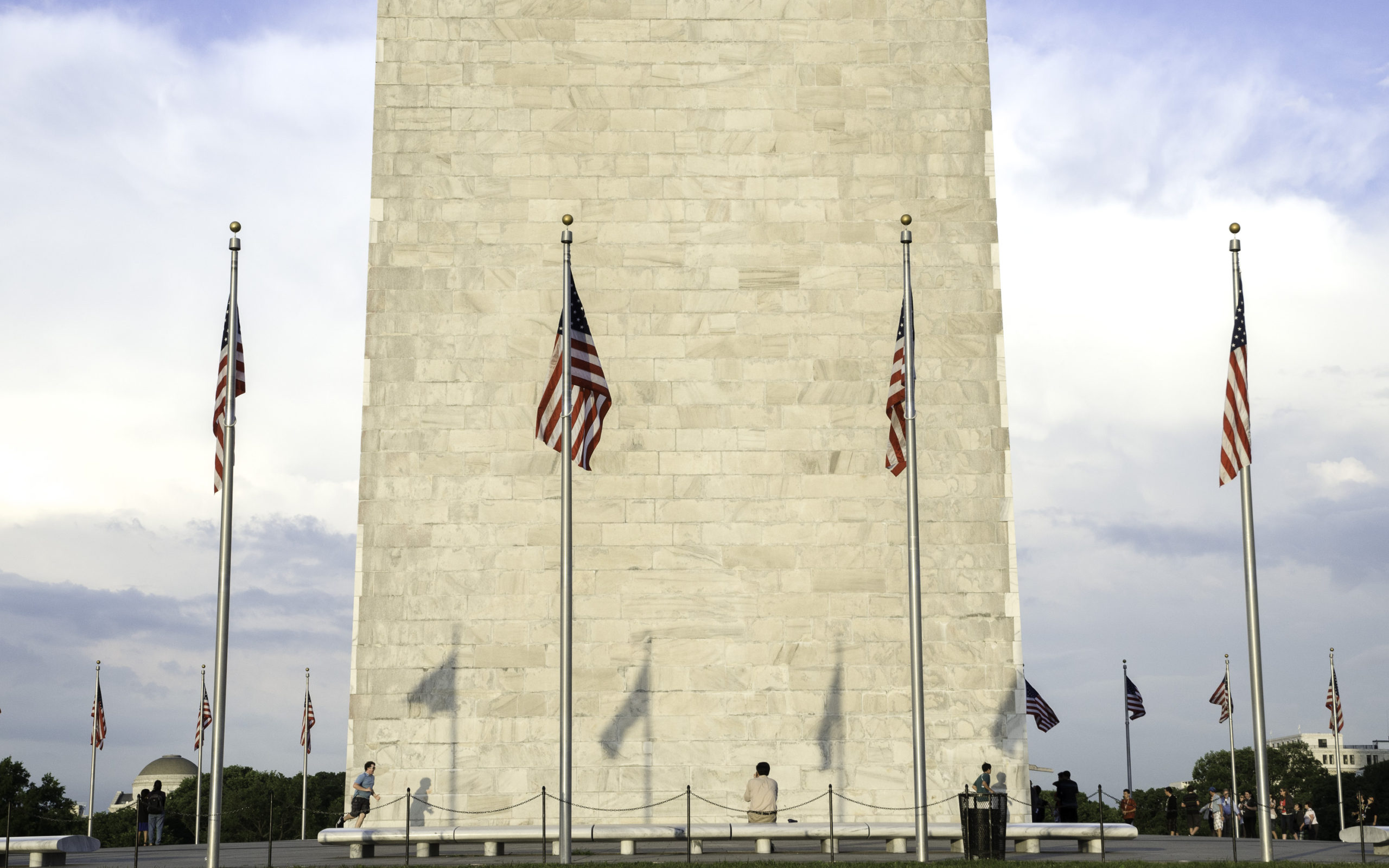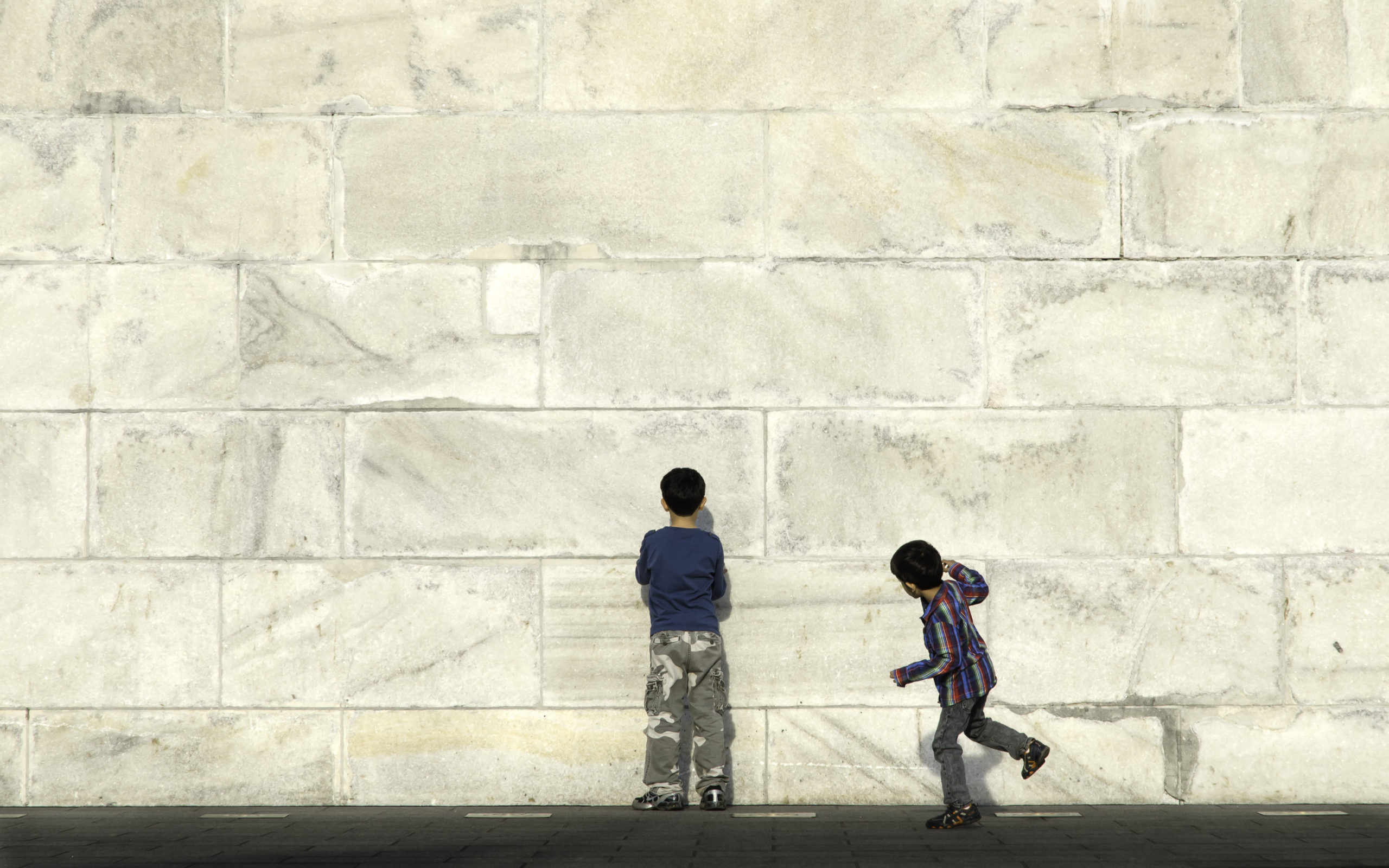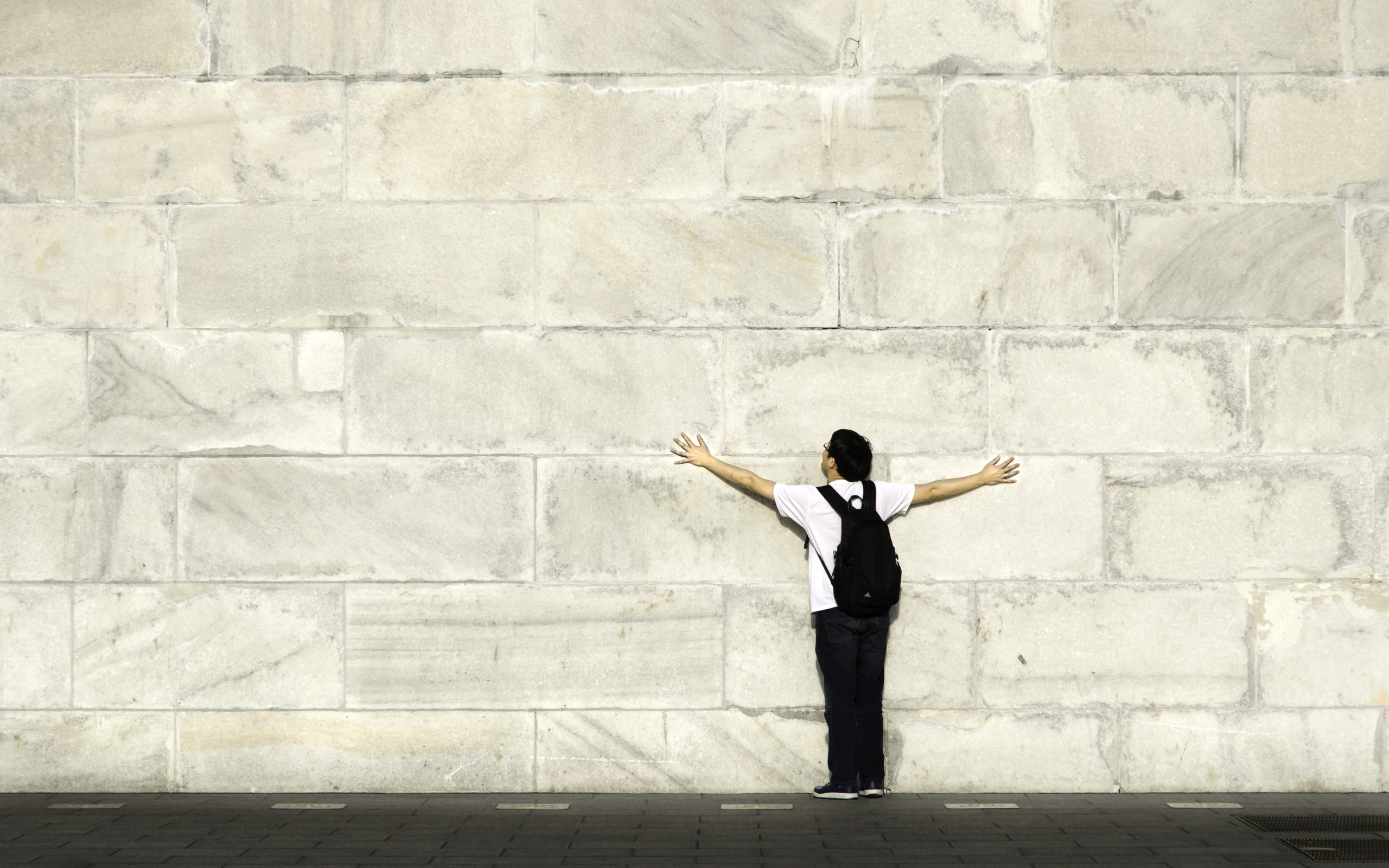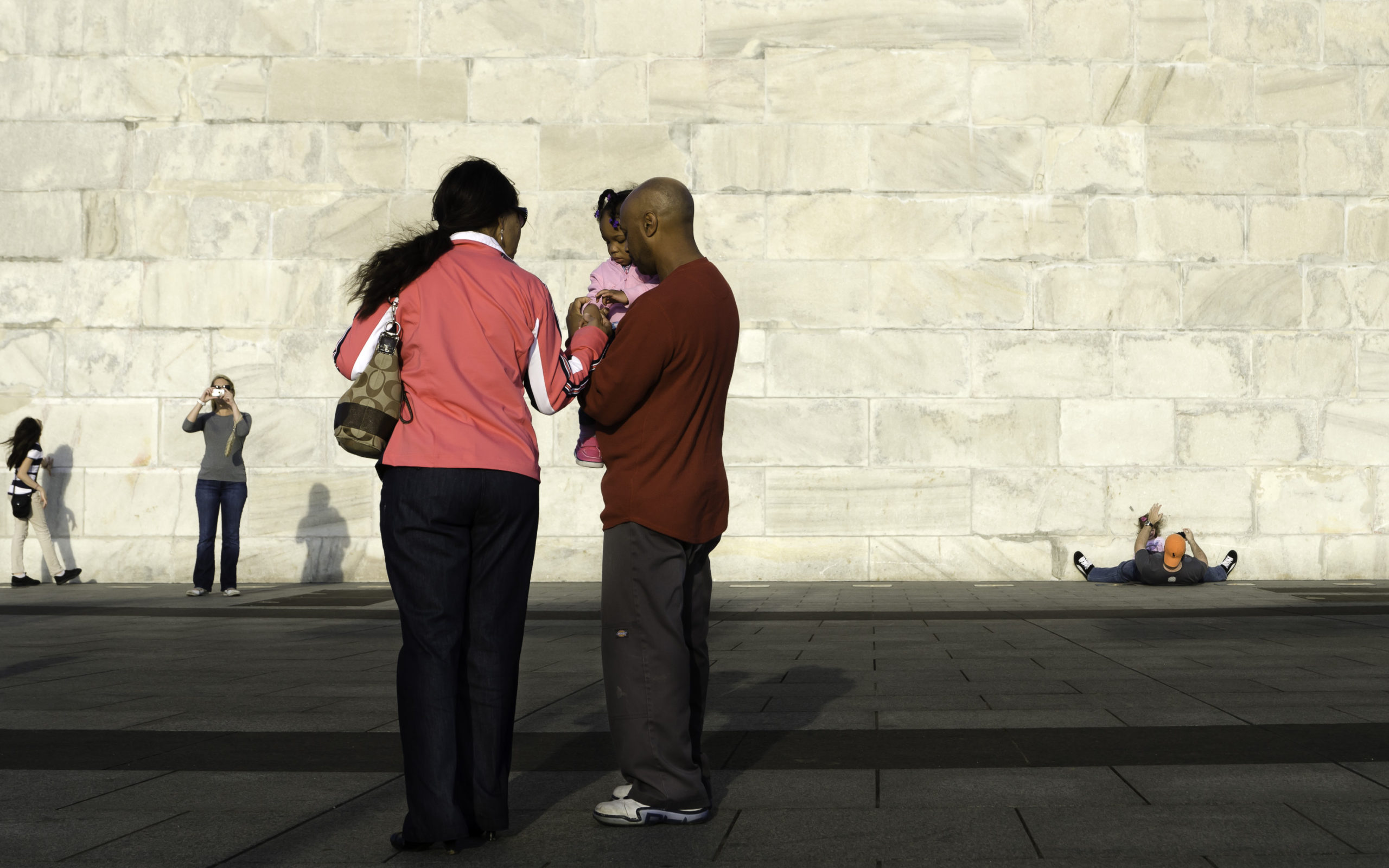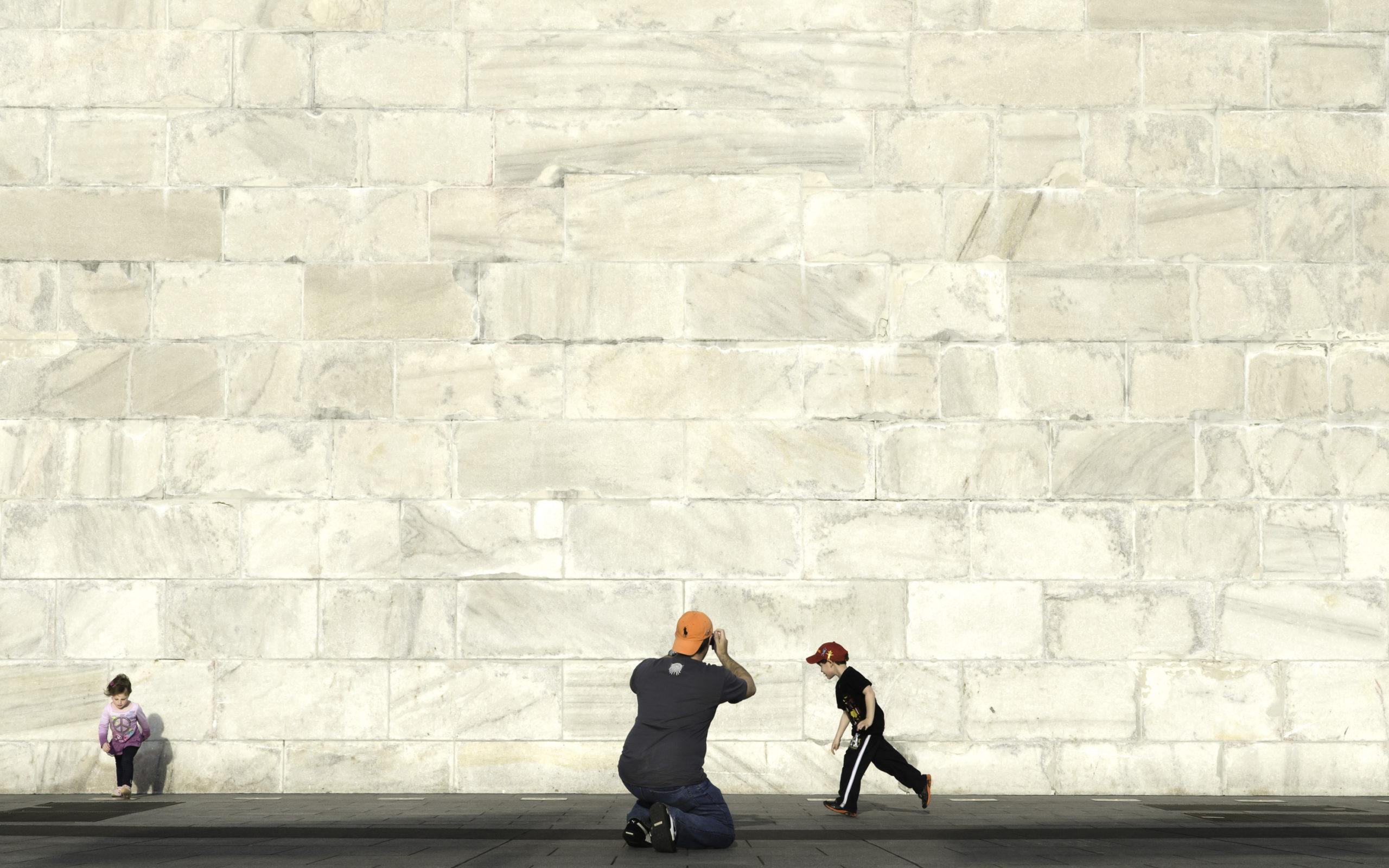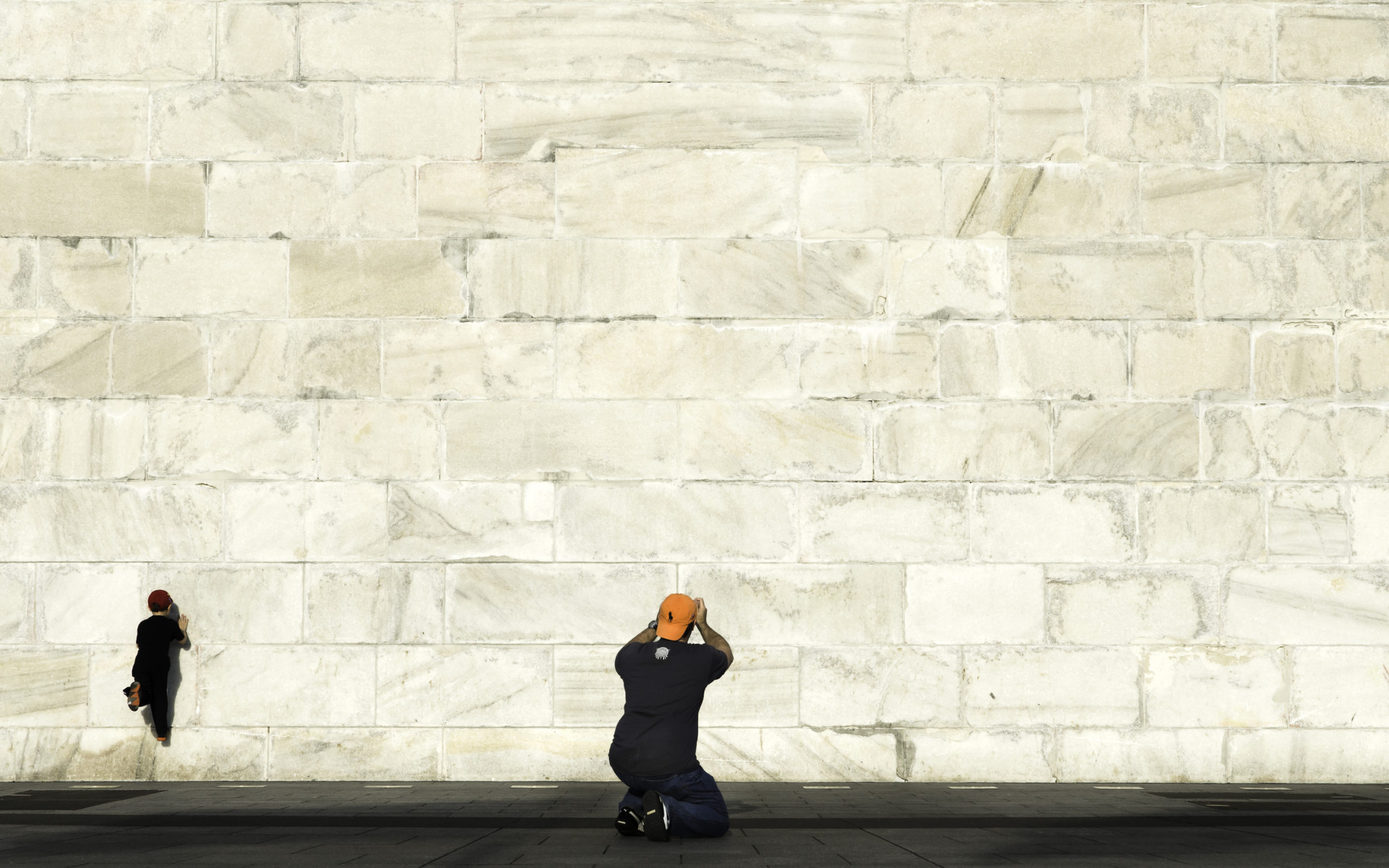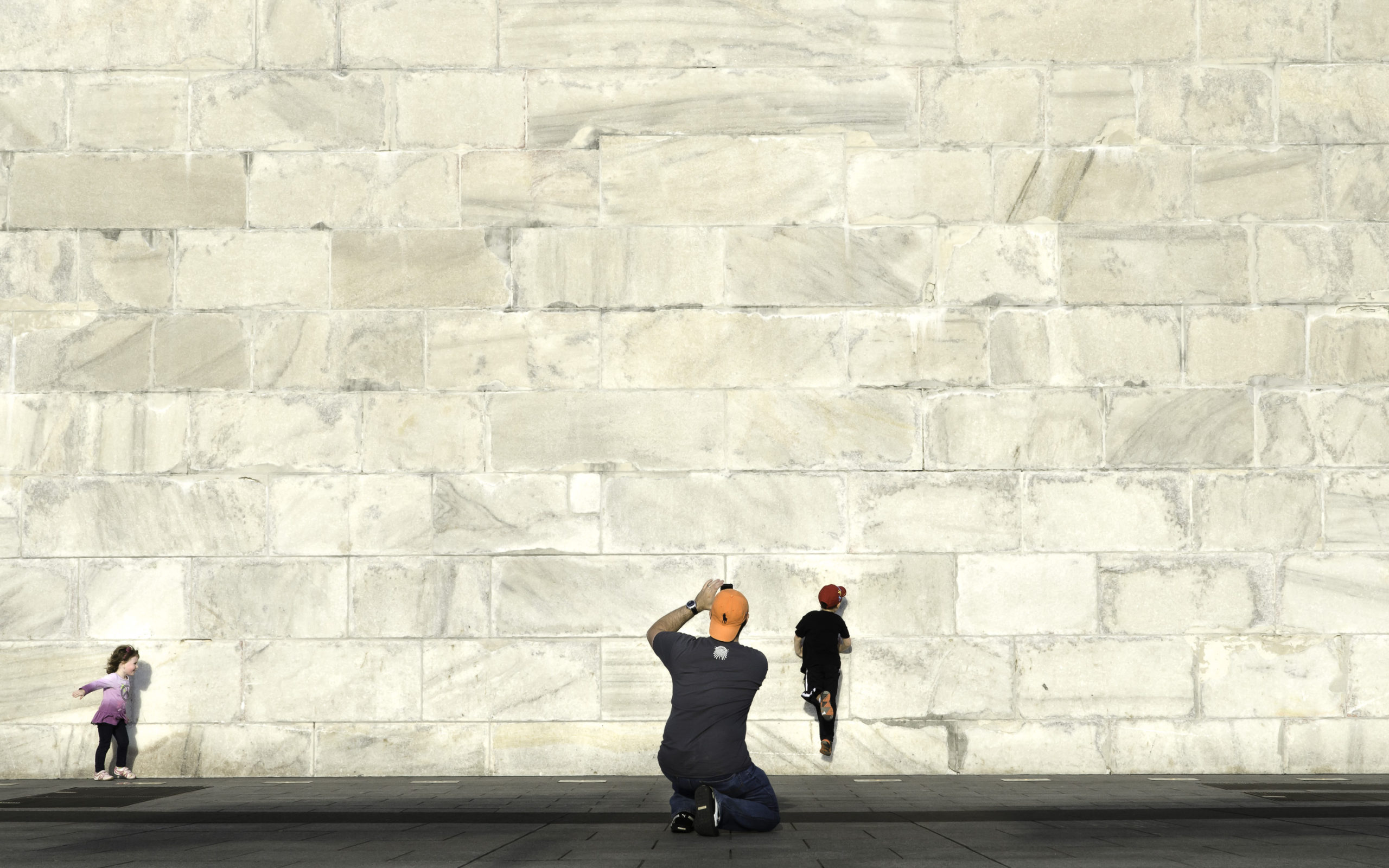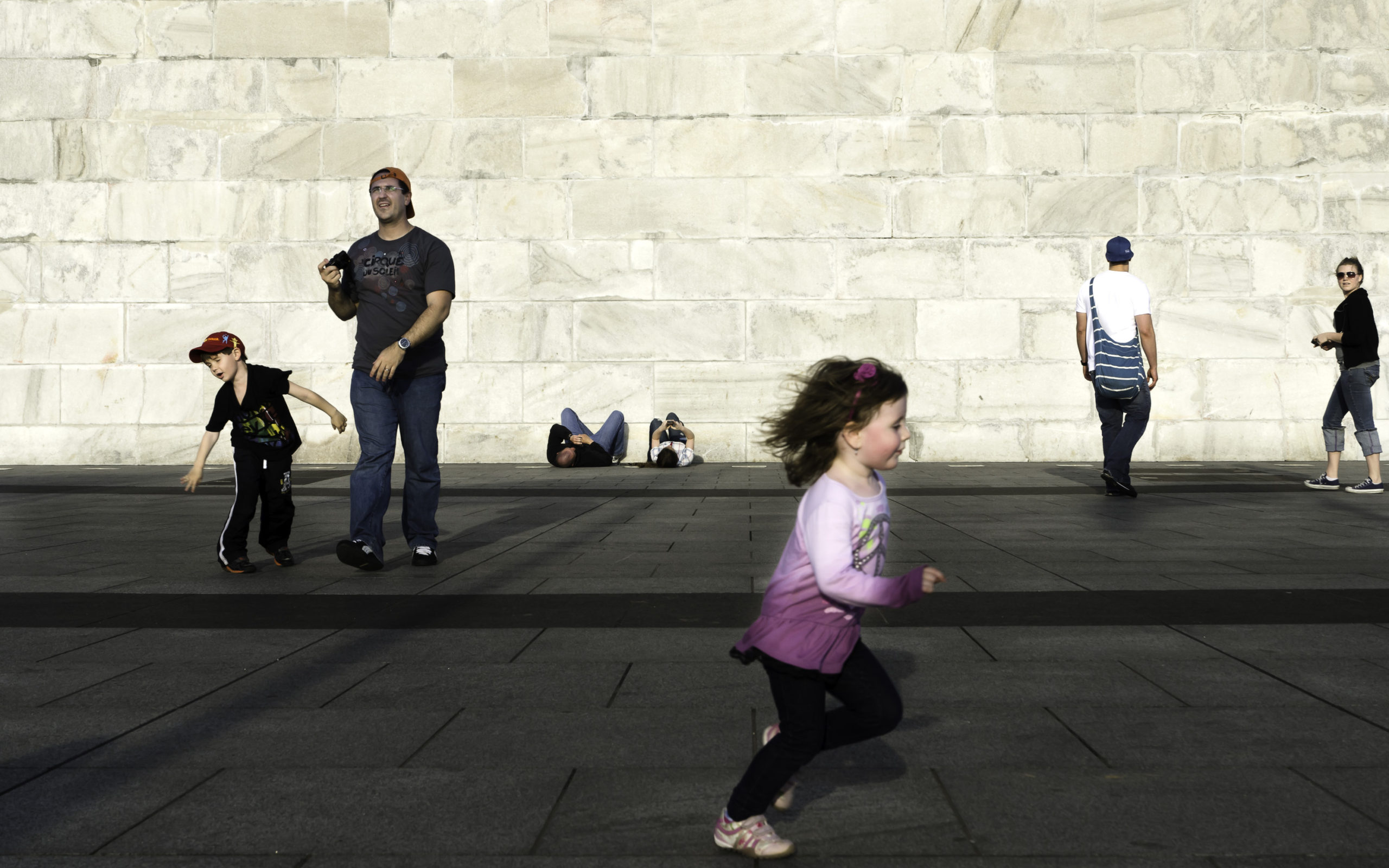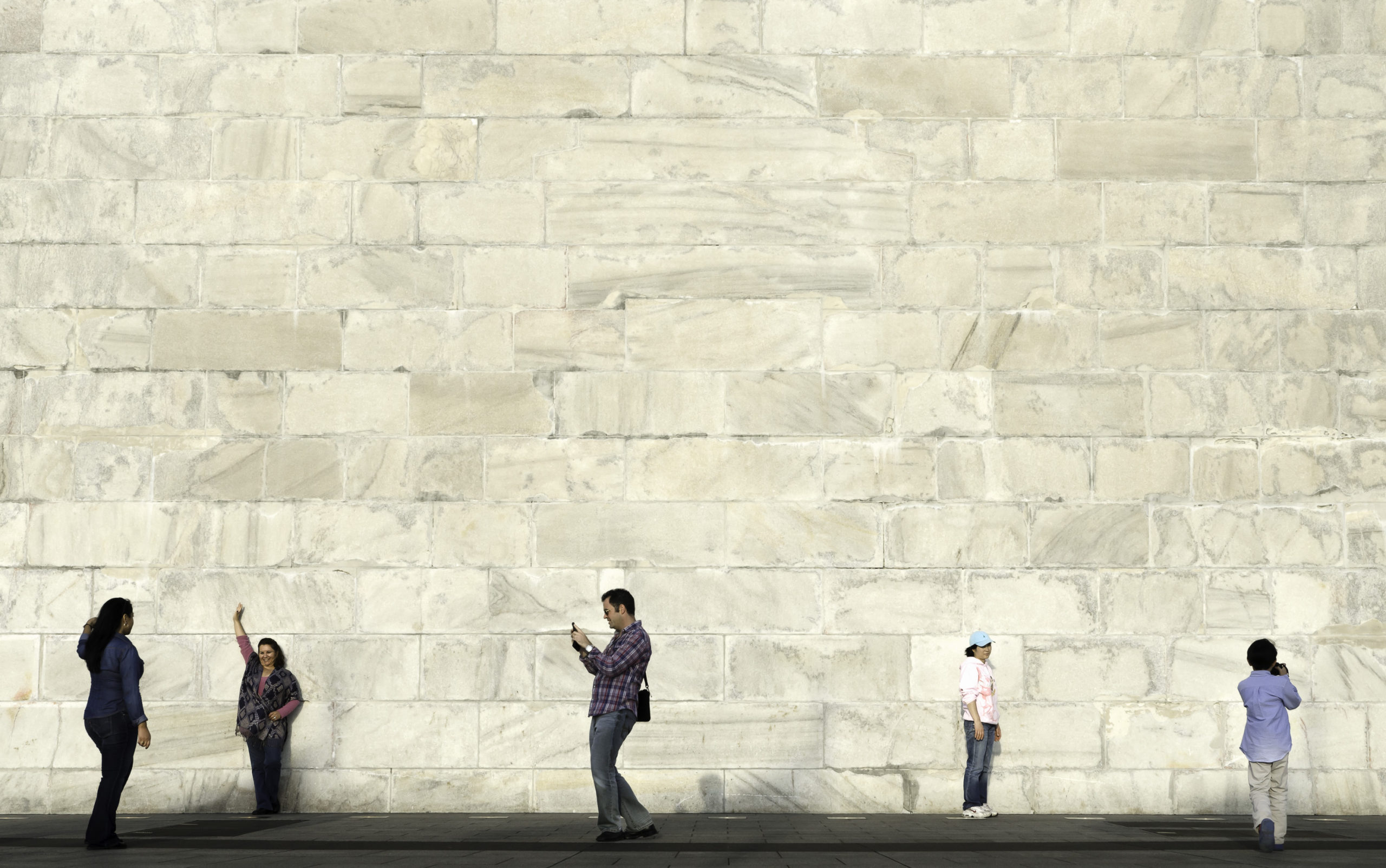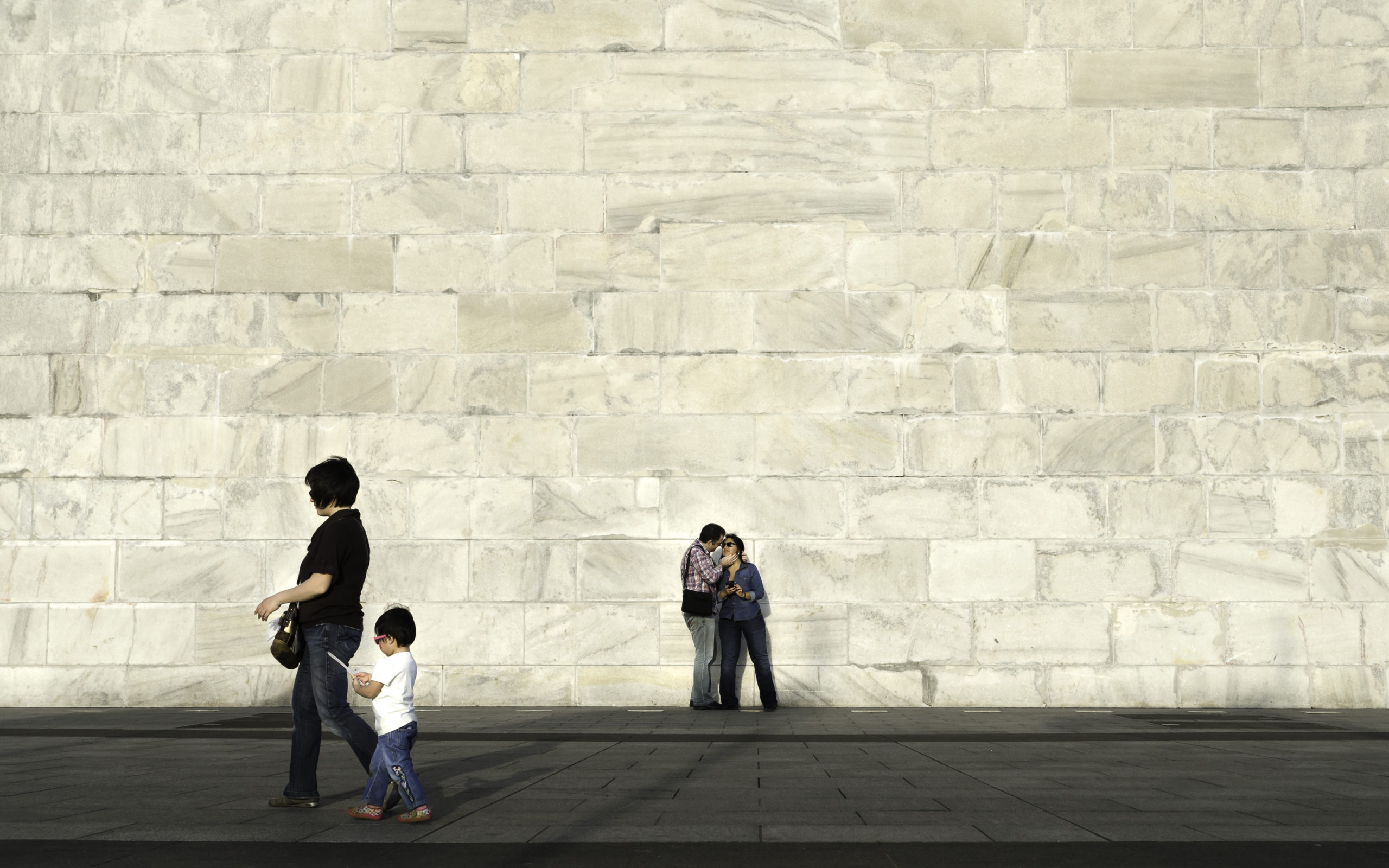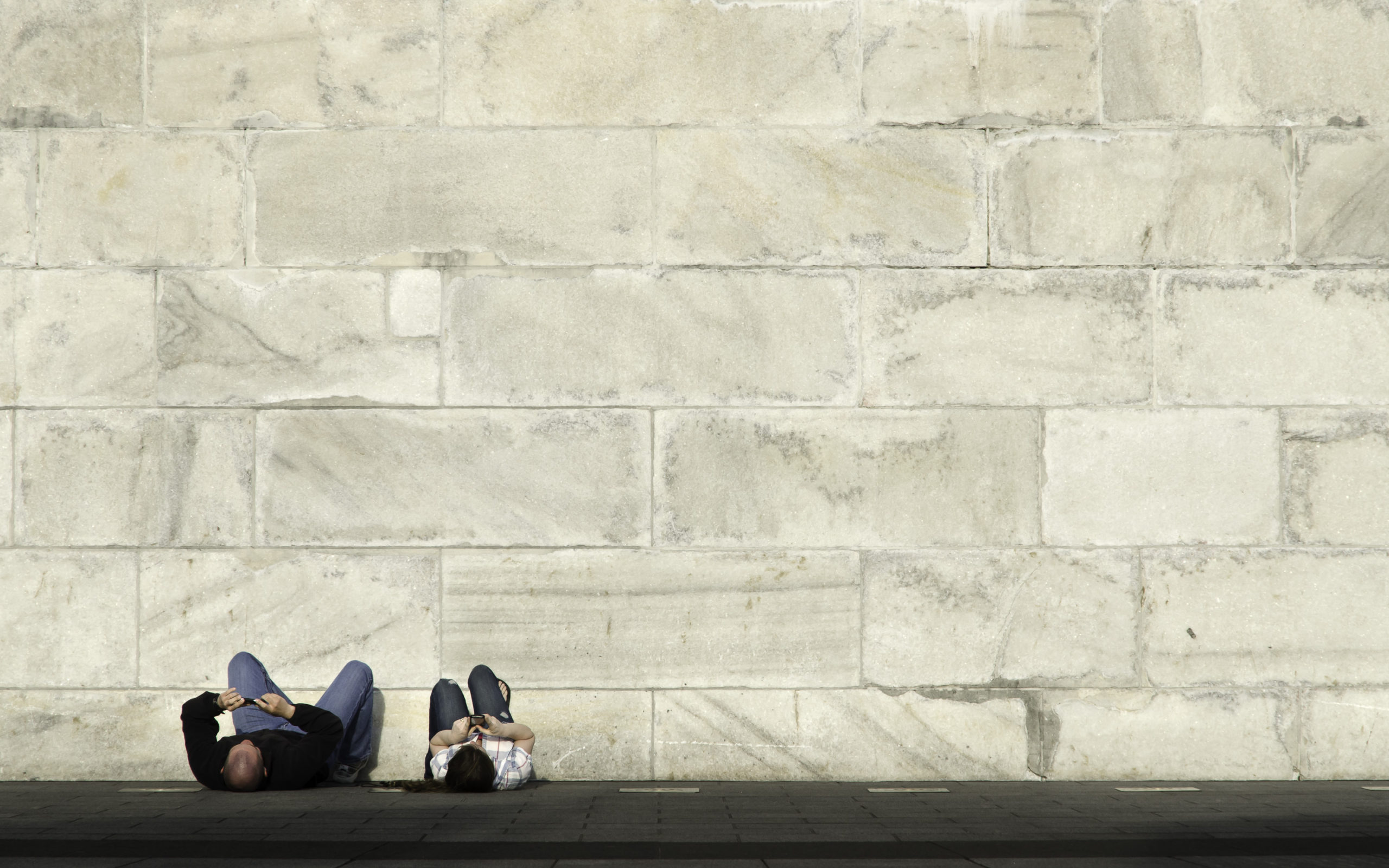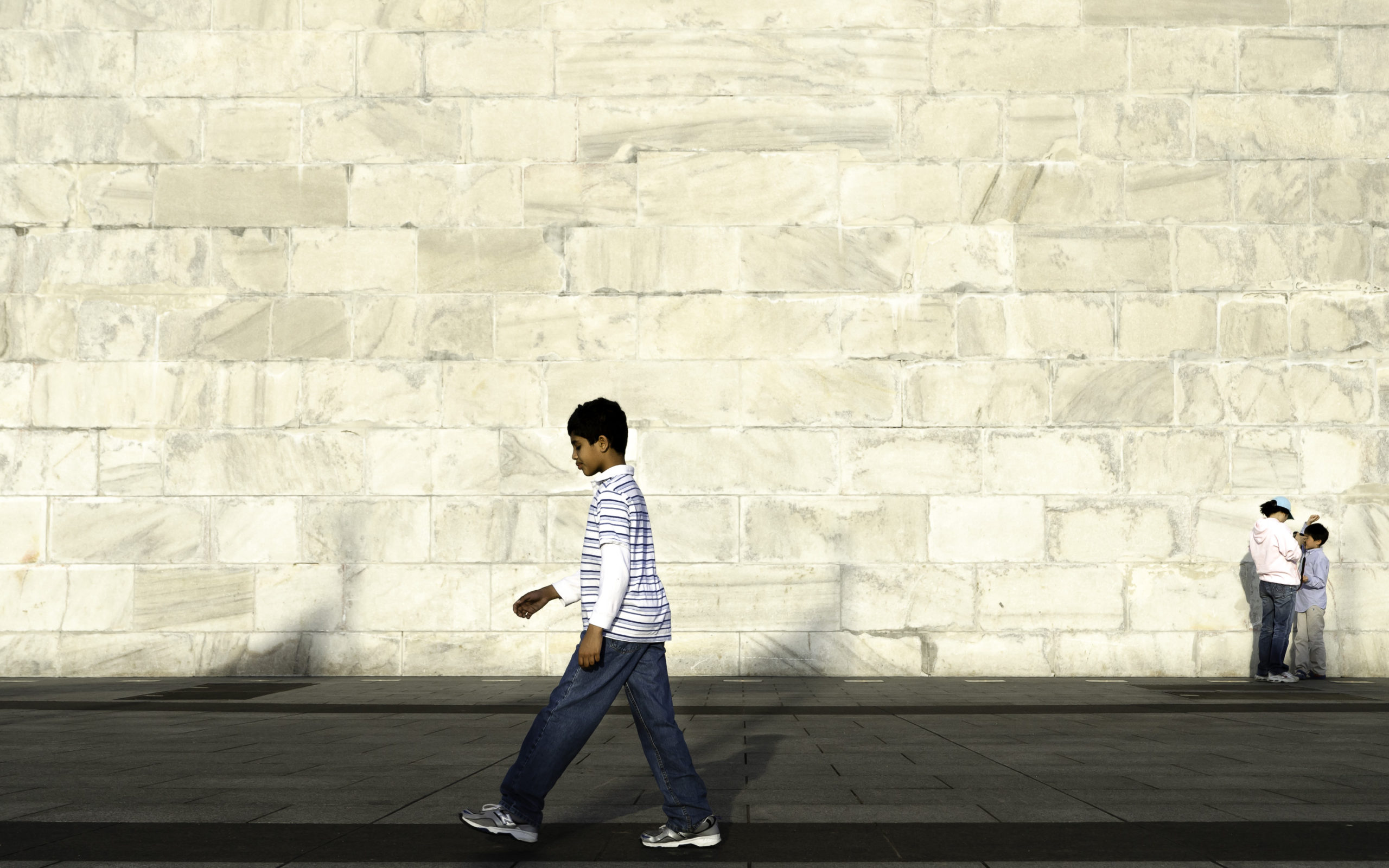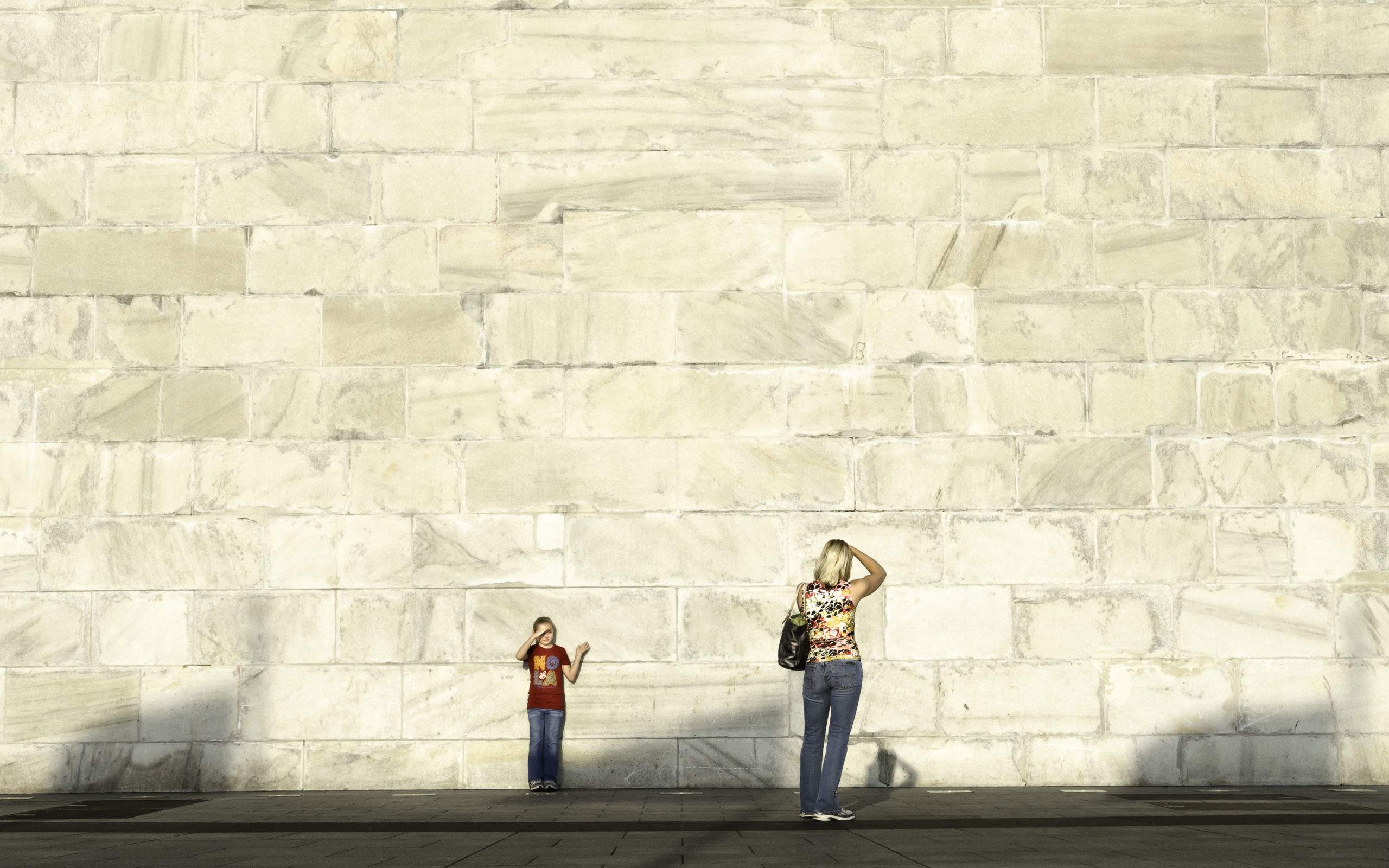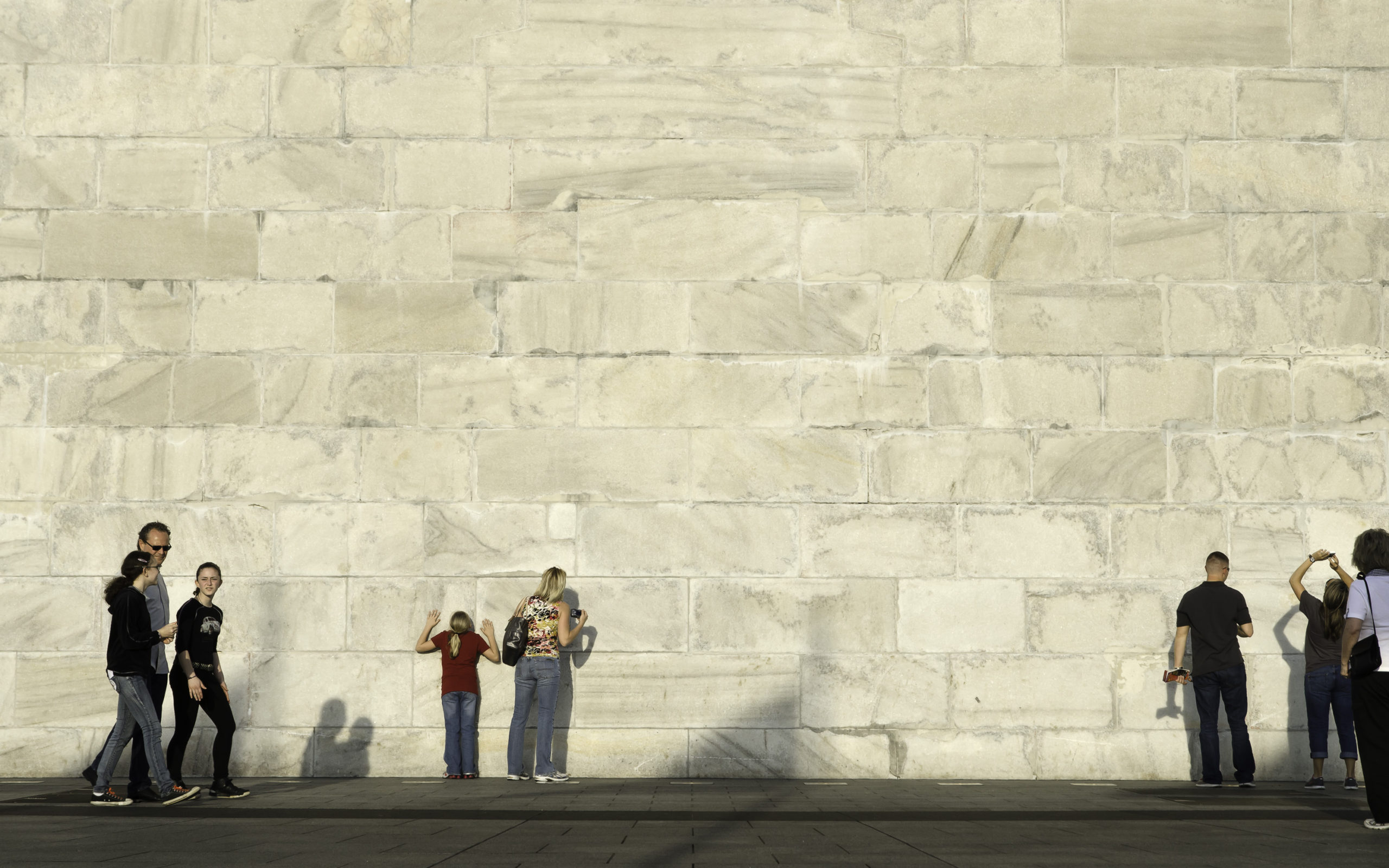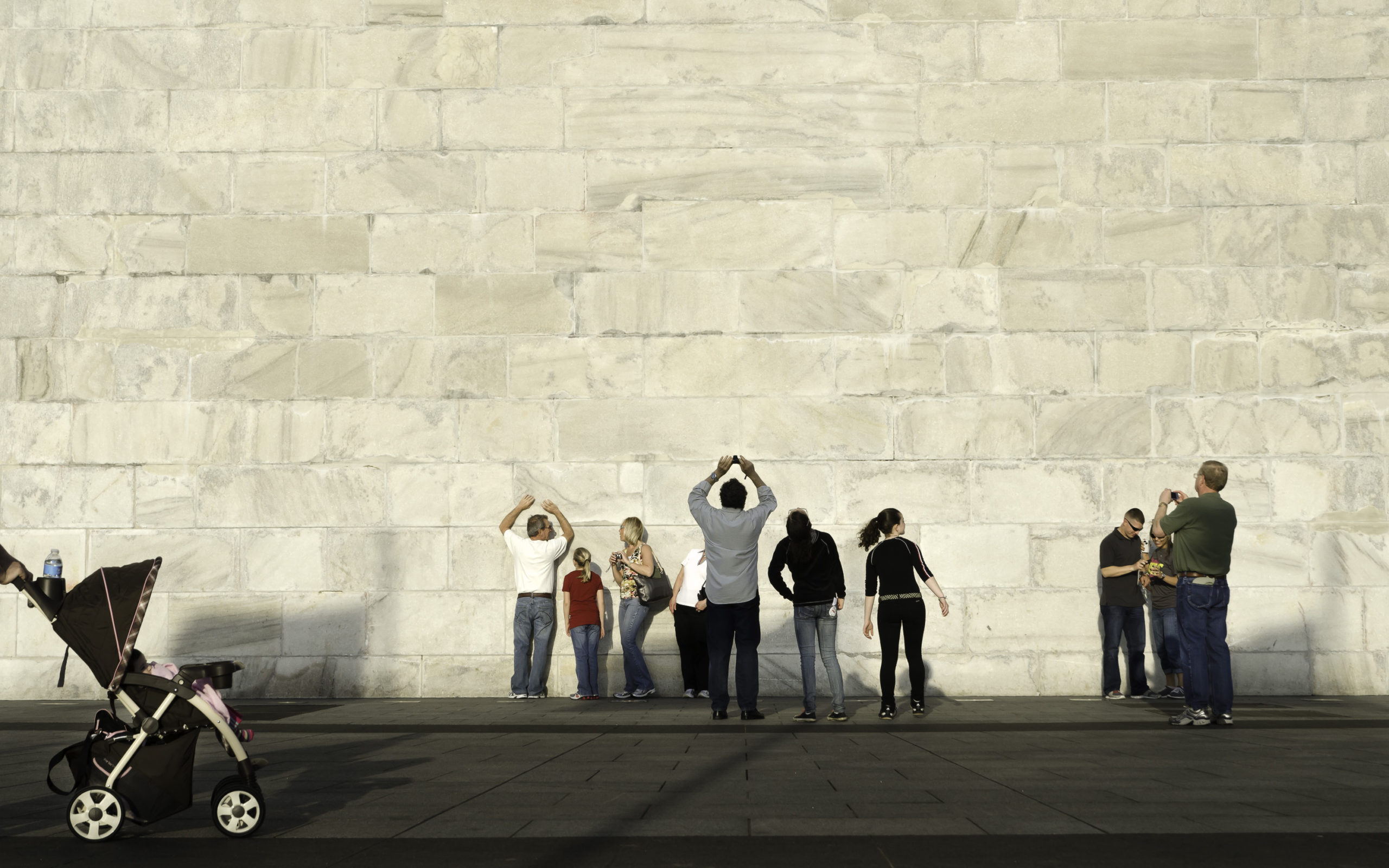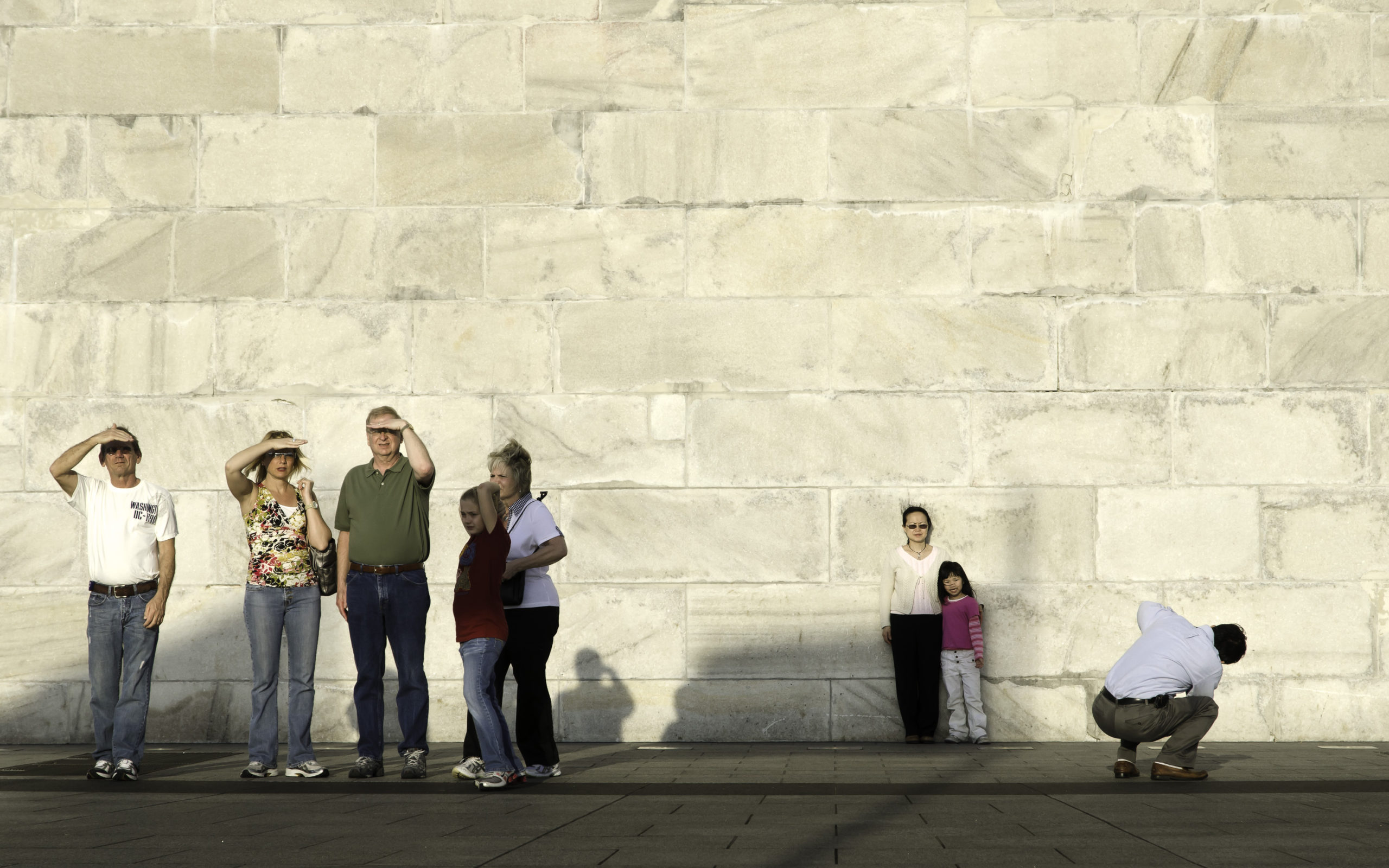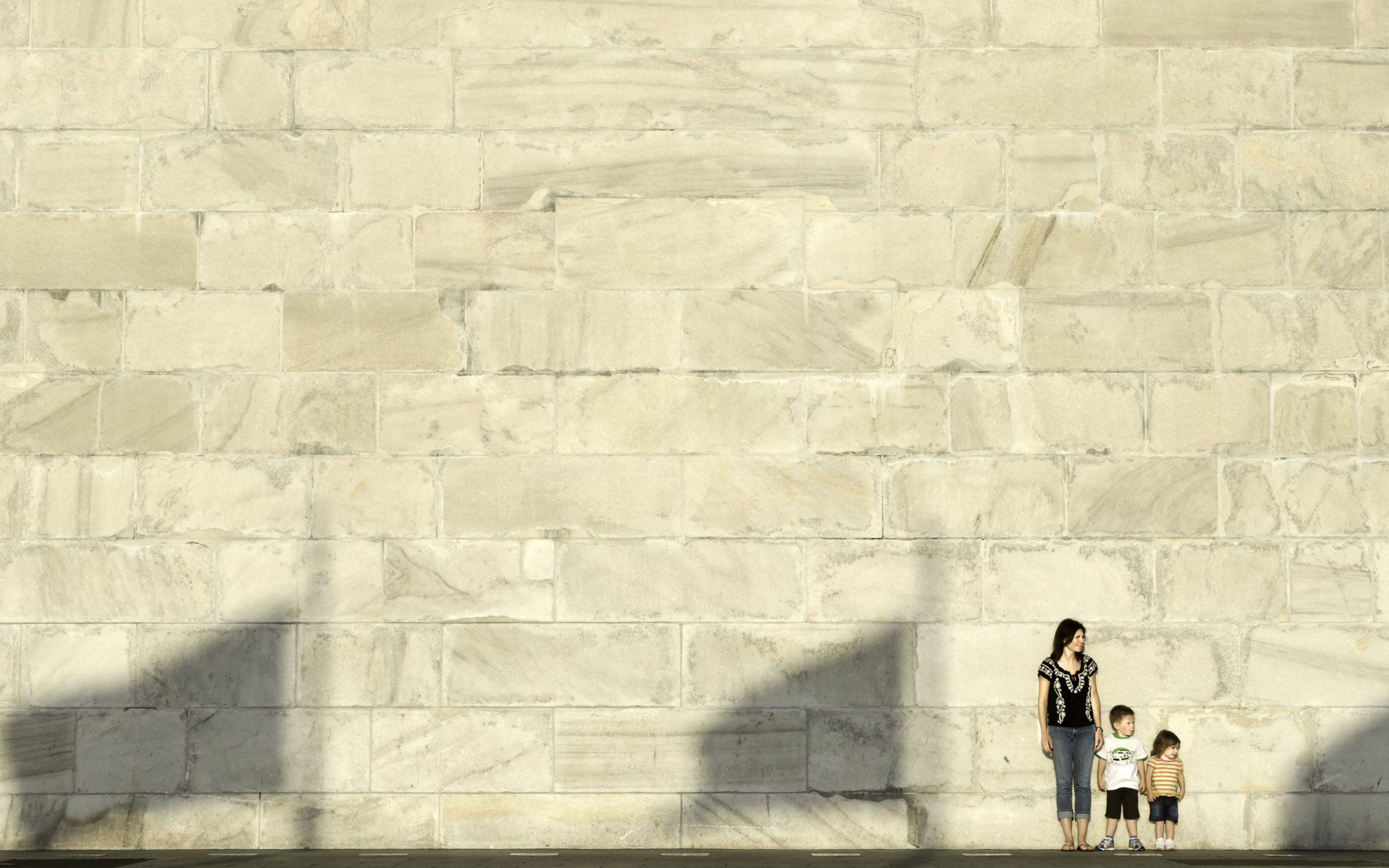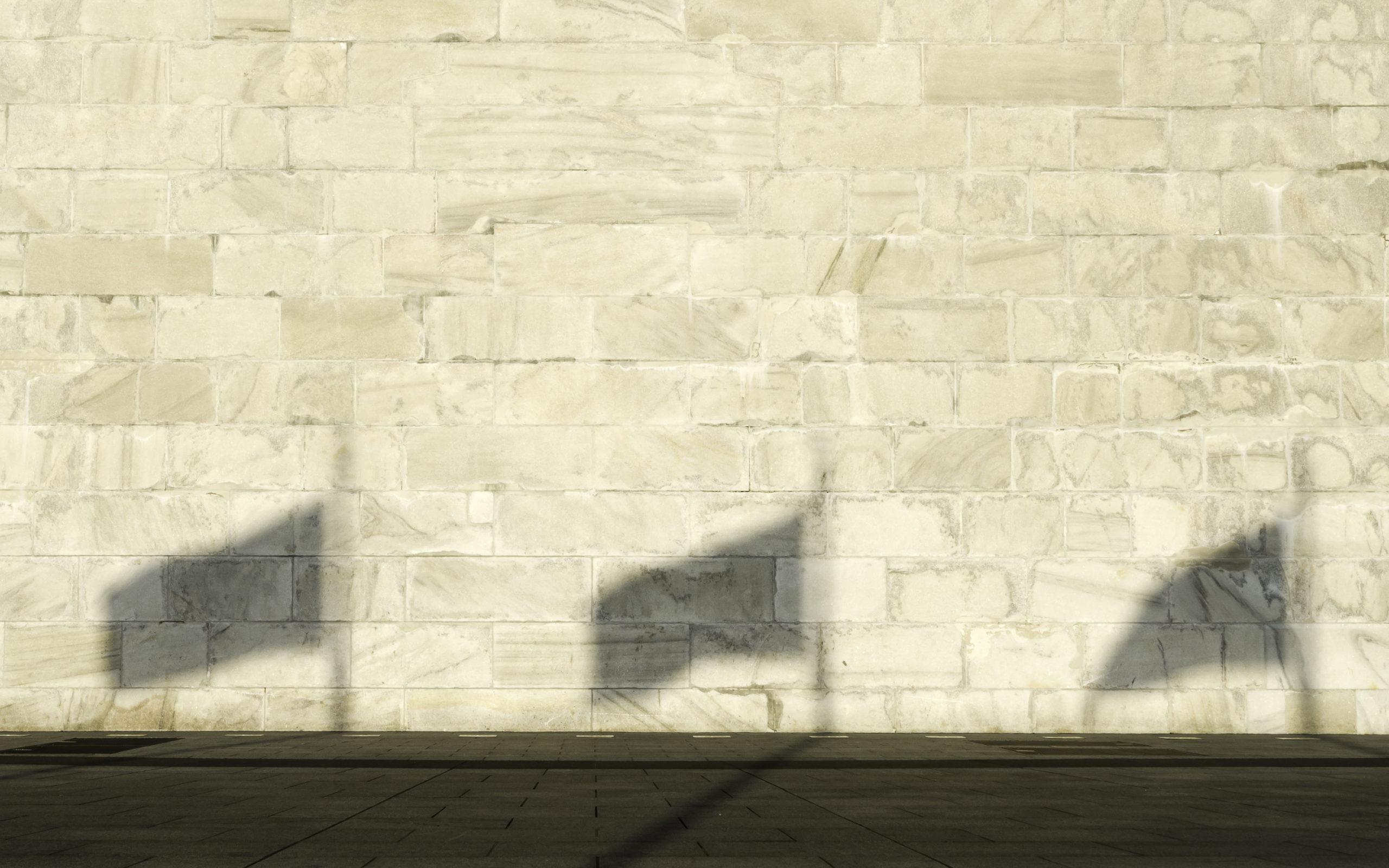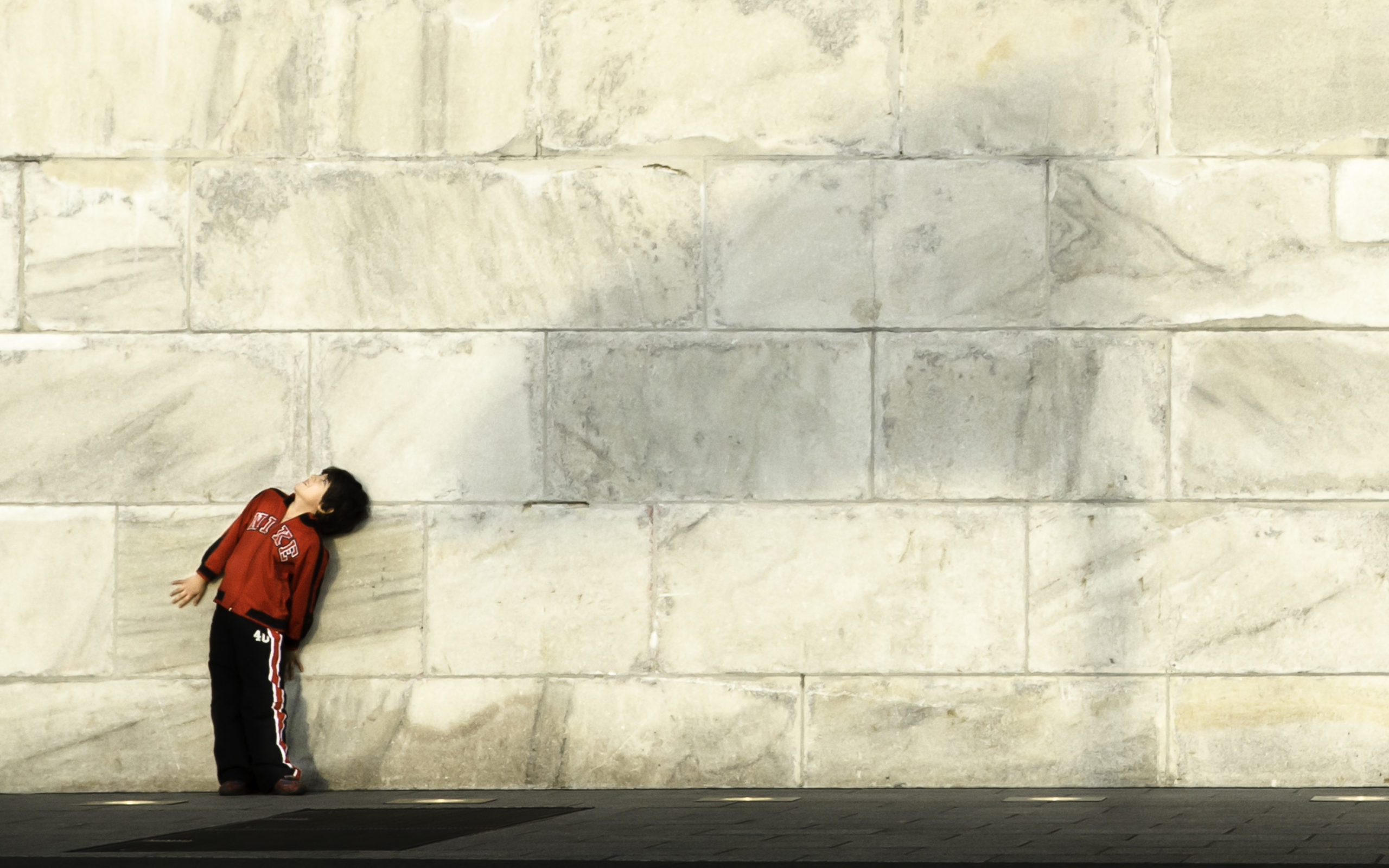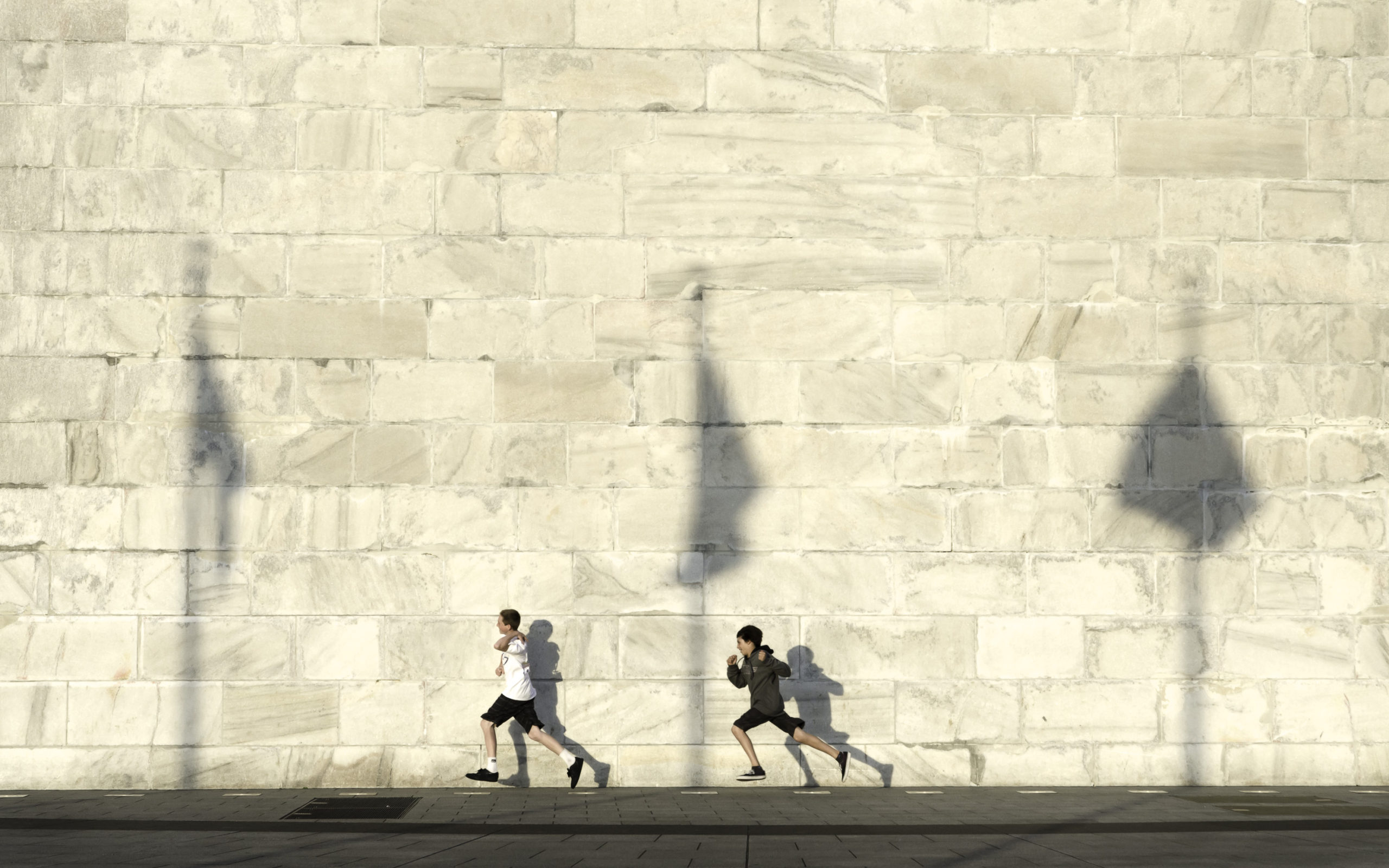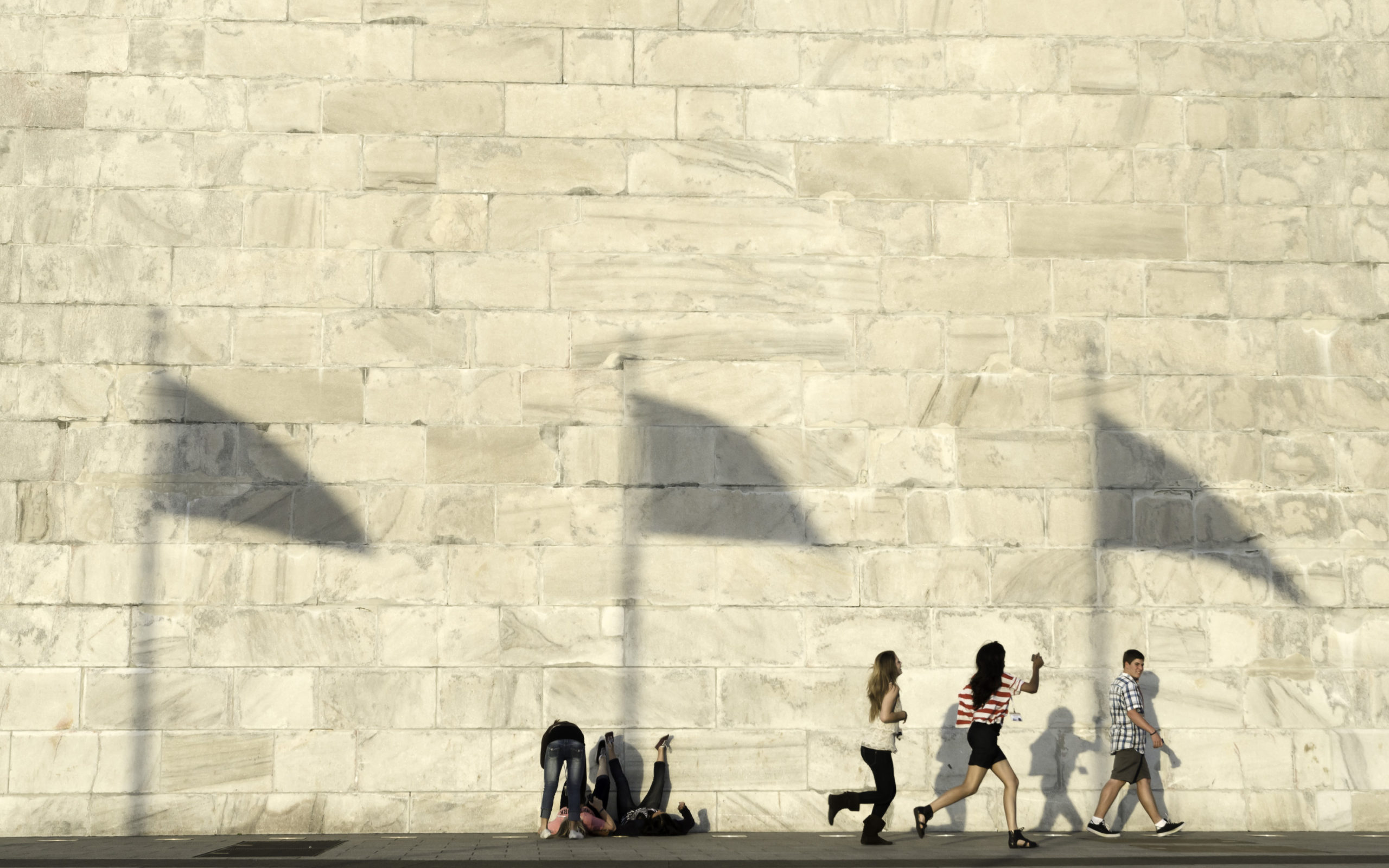Washington, DC – The Washington Monument
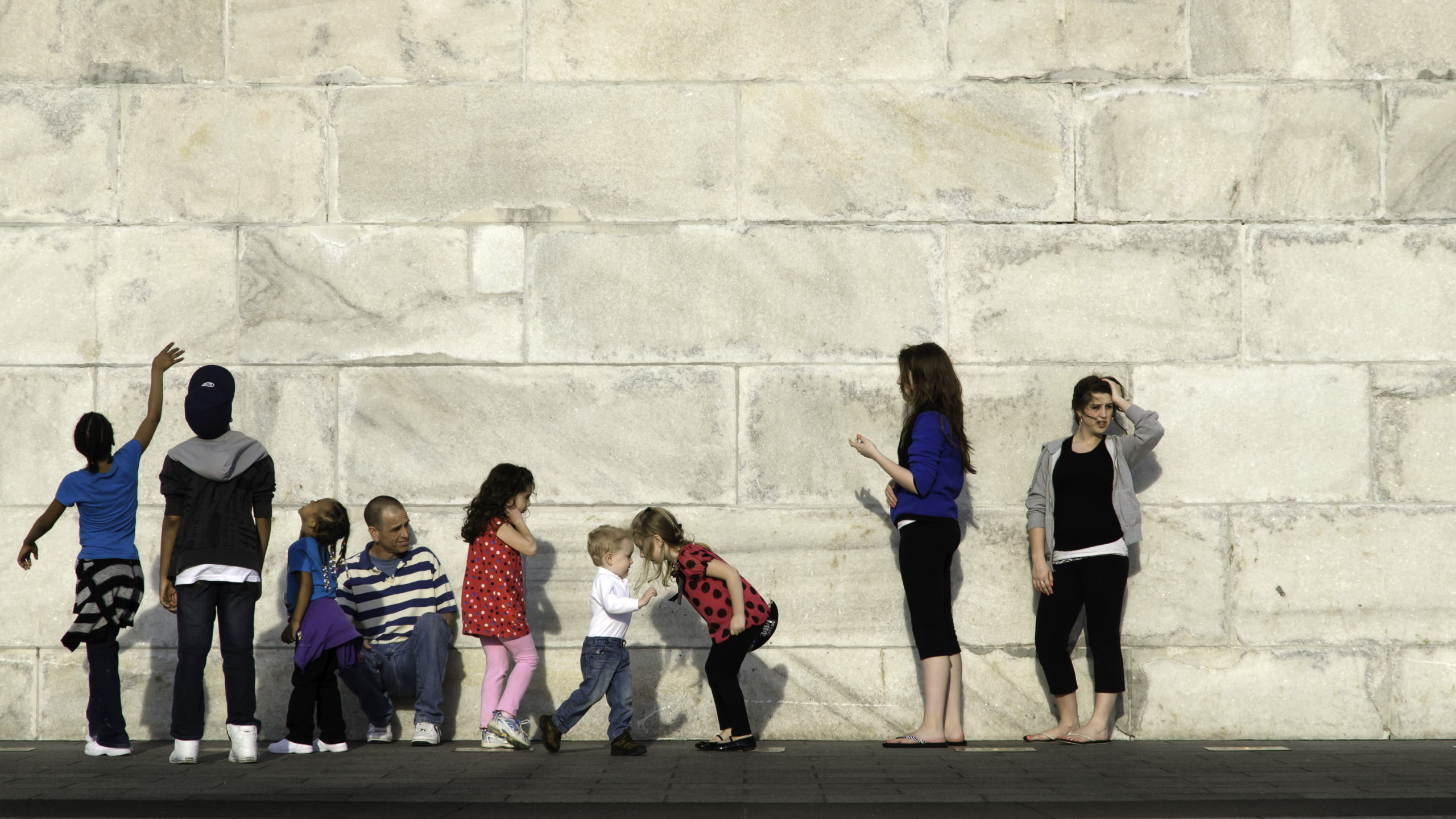
The Washington Monument is a beautifully simple and impressive obelisk, the tallest in the world, that dominates the National Mall in Washington, DC. It stands on an axis line that connects the United States Capitol with the Lincoln Memorial, over two miles (3.5 km) away. The monument’s scale, its geometric purity, and its placement along the length of the open Mall makes it visually powerful. It’s exciting to walk up to the 550-foot (168 m)-tall monument and let your eyes follow the smooth almost-vertical marble sides up into the sky. It can also be a bit terrifying if you let your imagination propel you up as well. In Ancient Egypt, where stone obelisks were first carved, they were called tekhenu, which meant “to pierce”, as in to pierce the sky. A look up a side of the Washington Monument will place you up there in the sky in a somewhat unsettling way.
Around the edge of the circular plaza at the base of the monument are fifty flag poles, as well as large marble benches. The flags flying around the periphery create a nice foil for the solid massive spike of the monument, and the long marble benches are a perfect place to lie on your back and take it all in. One spring afternoon, late in the day, I took a series of photographs from one of these benches, of visitors as they reacted to the sensations of being at the monument’s base. Their various actions and behaviors were a kind of physical expression of the mental exhilaration that the soaring surfaces induce, and of the effort the mind makes to comprehend the sensations created by a plane of marble disappearing into the sky.
As I photographed the scenes I kept the camera pointed straight at the wall, and I kept the field of view wide, so the marble wall became a kind of stage backdrop for the visitors – a canvas against which to capture arrangements of figures. As you scroll through the images you see the figures in all sorts of attitudes and motion. They stand with their noses to the wall, peer up the wall, lie down to look up at it. They run along the wall, jump up on the wall, and they even hug the wall. They stand alone or gather in pairs or families. They are often isolated in thought or conversation or experience, even when standing close to other visitors. The awesomeness of the encounter seems to impose and ensure a privacy they wouldn’t ordinarily feel in a public space.
As I was photographing these moments against the west wall of the monument, shadows from the flags that were behind me rose up the wall as the sun was setting. The animated shadows of the flags added another dimension to the scene, interacting with the cast of visitors as they acted out their experiences.
